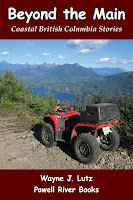 I’ve been saving apple skins and cores in the freezer. My plan was to make Apple Peel (Scrap) Jelly but I didn’t want to waste the flesh clinging to the skins. I found a recipe for Carmel Apple Jam at Canning Homemade through the Safe Canning Recipes Blog that looked more interesting.
I’ve been saving apple skins and cores in the freezer. My plan was to make Apple Peel (Scrap) Jelly but I didn’t want to waste the flesh clinging to the skins. I found a recipe for Carmel Apple Jam at Canning Homemade through the Safe Canning Recipes Blog that looked more interesting.
Carmel Apple Jam
 |
| Preparing the apple. |
Ingredients:
6 cups diced peeled apples
½ cup water
1 package powdered pectin
2 cups granulated sugar
1 ½ cups light brown sugar
½ teaspoon ground cinnamon
¼ teaspoon ground nutmeg
 |
| Making apple sauce from frozen skins. |
Directions:
 |
| Preparing the sugar and spices. |
Cook apples and water over low heat until soft. Stir in pectin and bring to a full rolling boil stirring constantly. Stir in sugars, cinnamon and nutmeg. Return to a full rolling boil and boil for one minute. Remove from the heat and skim off any foam. Pour hot jam into hot sterilized jars leaving ¼-inch headspace. Adjust lids and process for 10 minutes in a boiling-water bath. Yields 7 half-pints.
My Approach:
 |
| Cooking the jam with pectin. |
Each time I peel apples (all types) I soak the scraps in a solution of citric acid powder and water to prevent browning. Before freezing I remove any seeds.
 |
| Filling the sterilized jars. |
When I had enough, I put the peels in a saucepan with half a cup of water. I let them simmer on low for an hour covered and then uncovered until the water evaporated and they were mushy.
I processed the softened scraps in a food mill. The result was a thin applesauce. I added one diced cooked Granny Smith apple for texture.
 |
| Using my single jar water bath. |
I made a half batch following the recipe except I increased the cinnamon. I love cinnamon.
I’m very happy with the results. The taste is rich and not overly sweet. Next time I’ll use two diced apples to go with my scraps. I’ll also cook the apple cubes longer and mash them to a smoother consistency.
 |
| Carmel Apple Jam topping on my yogurt. |
Carmel Apple Jam is good on biscuits, toast and as a topping for yogurt and ice cream.
Do you have any favourite recipes for apples or apple scraps? -- Margy









































